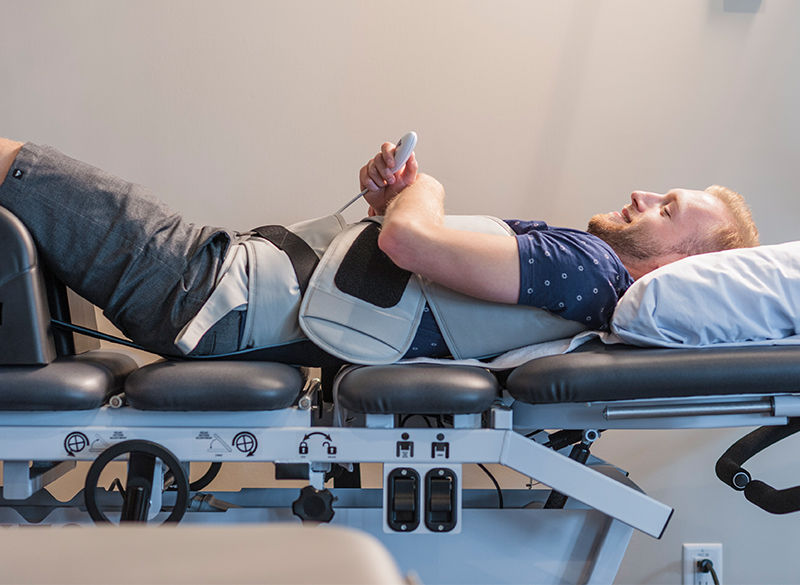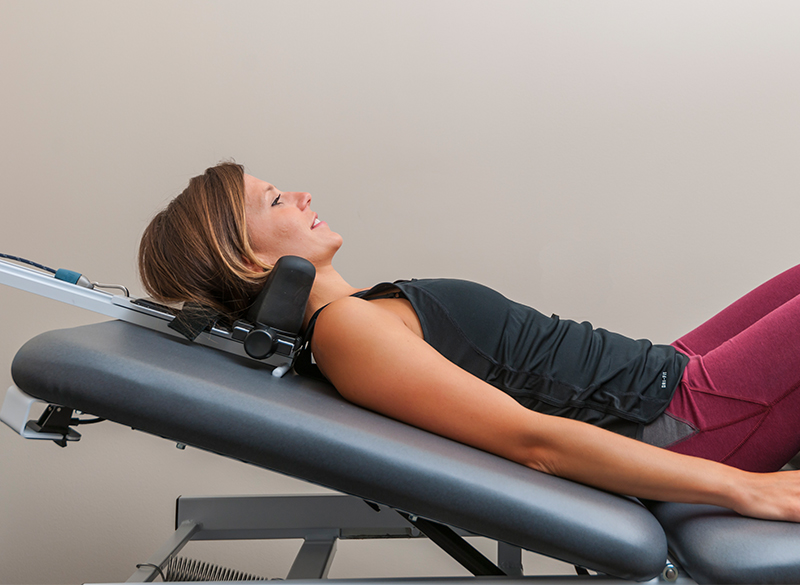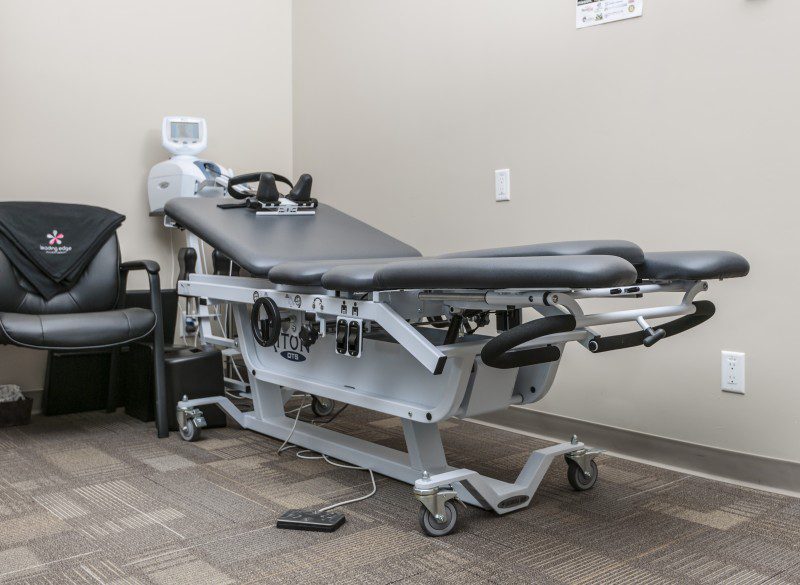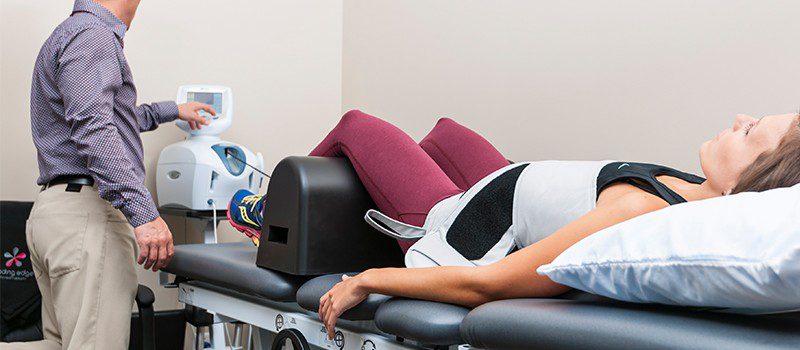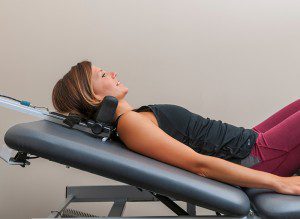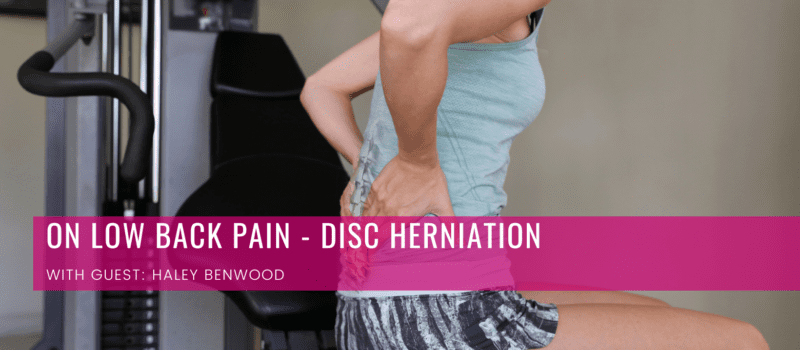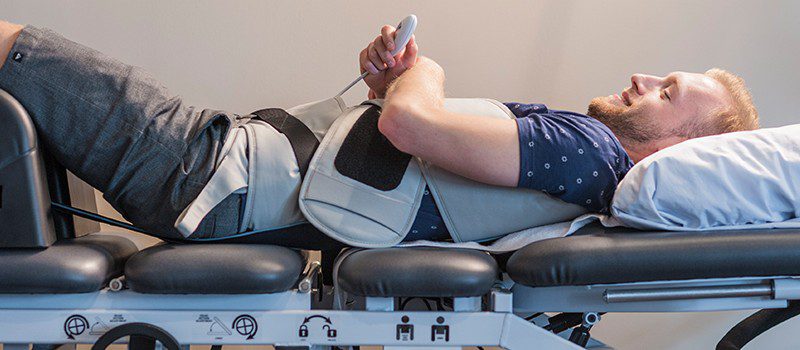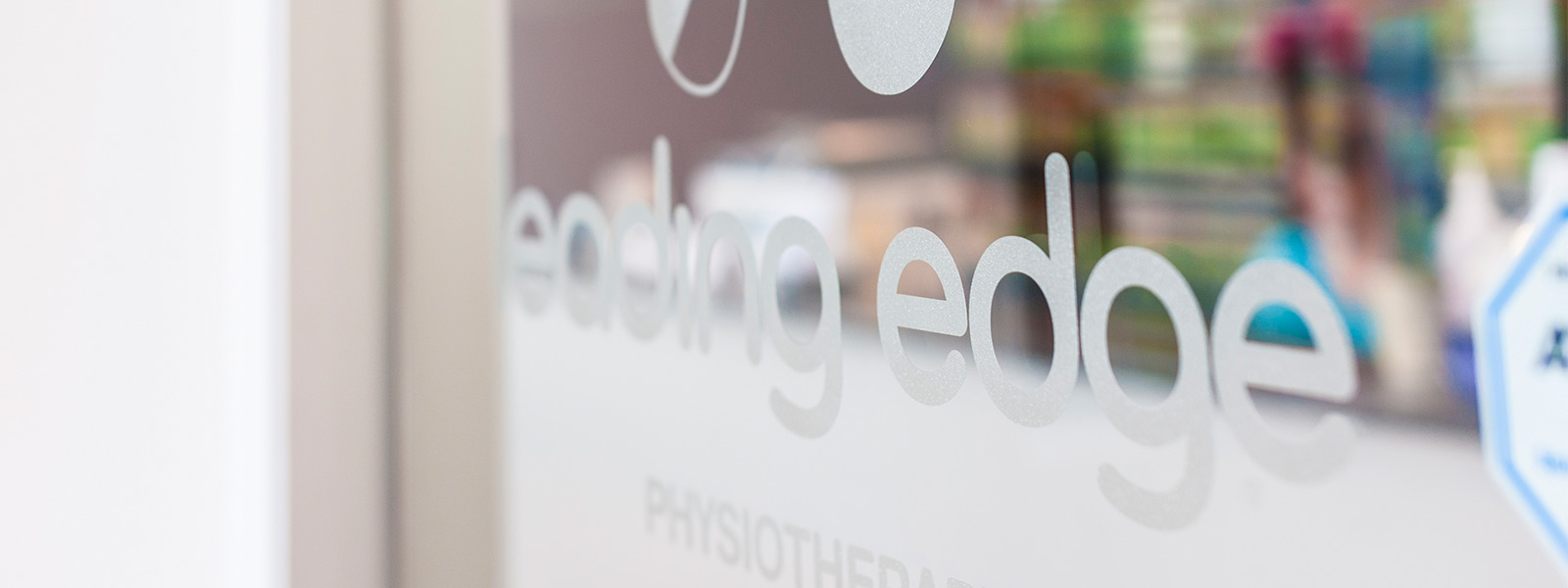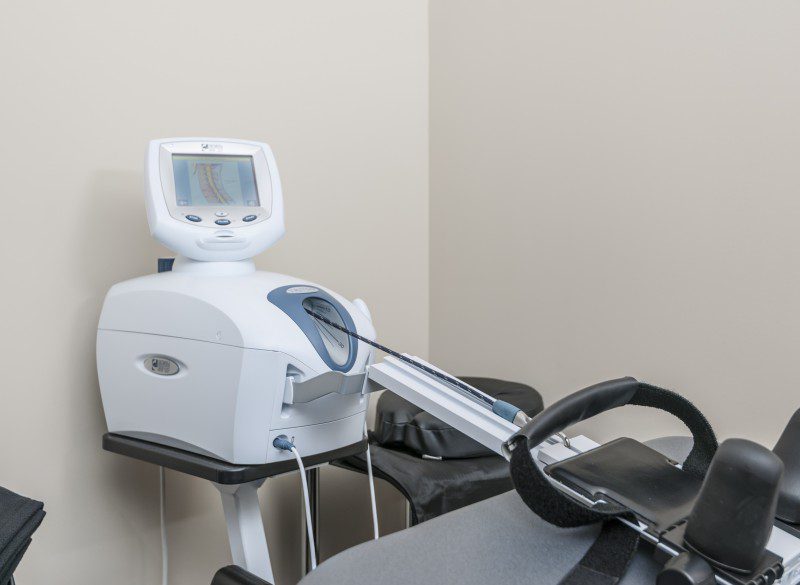
Available at Windermere, St. Albert, Royal Glenora, Capilano Rehabilitation Centre, Old Strathcona, Sherwood Park, Spruce Grove, Heritage Valley, Leduc, University District Calgary, and Tower Sports Medicine Calgary locations.
sometimes you need a little pull to get you going
At Leading Edge Physiotherapy we are pleased to provide spinal decompression in Edmonton and Calgary Regions. We utilize the latest advanced equipment in every aspect of the care we provide. In providing spinal traction we utilize the Chatanooga Triton dts Spinal Decompression System.
traction is the treatment with decompression as the goal
Spinal Decompression Therapy involves a specially designed table attached to an advanced computer module. The distractive (traction) forces performed by the table and unit create decompression (unloading) of the spine improving blood flow and delivering focused treatment to the neck or lower back. The traction head is programmed to deliver gentle stretching creating a relaxation of the spine, capsule and muscles, allowing the injured discs and soft tissue to receive treatment more easily and directly.
who can benefit?
- Bulging and Protruding Discs
- Herniated and Ruptured Discs
- Cervical and Lumbar Central or Lateral Canal Spinal Stenosis
- Sciatica
- Cervical and Lumbar Osteoarthritis
- Degenerative Disc Disease
- Carpal Tunnel Syndrome
- Cervical and Lumbar Facet Syndrome
- Scoliosis
- Failed Surgery
- Cervical Disc Pain
- Pinched Nerves
- Compression Fractures
During a treatment session, patients will lay on our specially designed traction table.
Lumbar traction:
Patients are fully clothed during the  procedure. The patient will be laying either on their back or stomach depending on the treatment plan that the therapist has determined will best manage your condition. A harness is placed around the hips and is then attached to a mechanical device. This device will digitally apply a varying amount of force, as set by your therapist. When the device is applying the decompression force, the bed will separate. The upper body remains in a fixed position, while the lower half of the body will be able to slide back and forth allowing for traction and relaxation.
procedure. The patient will be laying either on their back or stomach depending on the treatment plan that the therapist has determined will best manage your condition. A harness is placed around the hips and is then attached to a mechanical device. This device will digitally apply a varying amount of force, as set by your therapist. When the device is applying the decompression force, the bed will separate. The upper body remains in a fixed position, while the lower half of the body will be able to slide back and forth allowing for traction and relaxation.
Cervical traction:
As with lumbar traction a patient will remain fully clothed or in a gown. In this instance, a patient will lay on his or her back and their head will be placed into a comfortable device that secures the head just below the ears. The traction device will digitally apply a varying amount of force, as set by your therapist.
In nonsurgical spinal decompression therapy, the spine is stretched and relaxed intermittently in a controlled manner. The result is believed to:
- Create a negative intradiscal pressure to promote retraction or repositioning of the herniated or bulging disc material.
- Create a lower pressure in the disc that will cause an influx of healing nutrients and other substances into the disc. This can foster a better healing environment.
- Stimulate mechanoreceptors, nerves that sense motion, in order to inhibit pain nerve stimulus to the brain. This can promote inhibition of muscle spasm and reduce pain.
Essentially, the effect would be like taking one’s foot off of a tube of toothpaste and allowing the vacuum phenomena to bring the toothpaste back into the tube.
As your injury will be assessed by a registered physical therapist and as the Spinal Decompression is performed by a physical therapist at our facility, the procedure is considered physical therapy and should therefore be covered by third party physical therapy insurance coverage.

